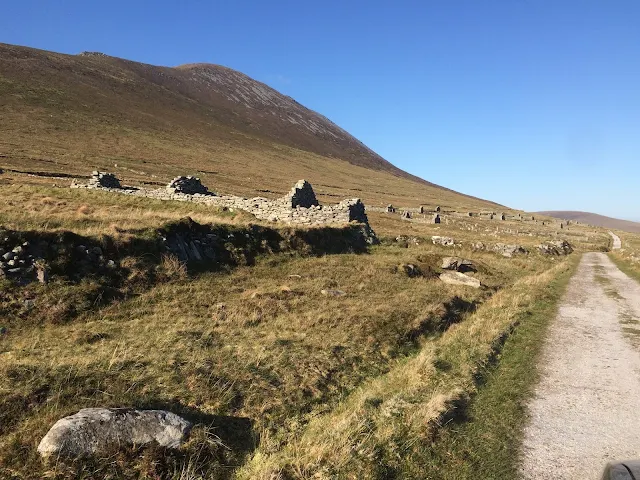The Deserted Village at Slievemore on Achill consists of about 100 stone cottages. Archaeological evidence suggests that there has been human settlement in the area for thousands of years.
The first Ordnance survey of Achill Island in 1838 showed the village at Slievemore to be occupied. Less than twenty years later, following the ravages of the Great Famine, a traveller to the island described the village as deserted.
The houses are all rectangular in shape with well built thick dry stone walls. Many of the gables especially appear to be in good shape. Apparently in the past they had thatched roofs. The majority of the houses are windowless and have only one doorway. Some of the cottages have two doorways, one at either end of the house.
These relic dry stone structures stand in mute testimony to how hard this part of Ireland was hit by the Great Famine and by the exodus of its citizens that followed.


